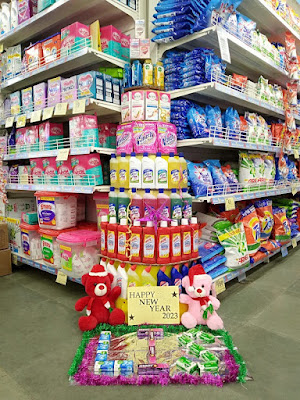Tried and Tested E-commerce Product Listing Strategies to Skyrocket Your Sales!
Good product design and good packaging are essential. Whether you're shopping for coffee at the supermarket or surfing the web wearing leather gloves, how a company presents its products leaves a lasting impression. Choosing the font of your label can look cheap or fancy, and changing the bottle's look can increase your sales.
Everything is a factor, but how you build your product listings in an e-commerce environment is more important than personality. Let's talk about product listings and how to create product listings on the most popular platforms.
What is a product list?
A product listing page (PLP) is a particular page that lists products available for purchase. A good product listing page should include the following:
- Price
- customer review
- purchase options
- photo and video
- full description
It's essential to include all features, delivery options, technical details, and customer reviews, as online shoppers need to ask store associates about specific items. This way, your online visitors will have all the information they need to understand your Product to make a purchase.
What is a product listing in eCommerce?
An e-commerce product listing is any product that can be purchased electronically online. In retail e-commerce, most product listings are business-to-consumer (B2C) or consumer-to-consumer (C2C). Any company that lists products in its online store usually targets a specific audience for purchase.
An example of an e-commerce product listing would be:
- Retail: A business that sells products to consumers. Wholesaler: A company that sells goods to retailers in bulk for the retailer to sell to consumers.
- Subscription: A product or service automatically sold to paying subscribers on a recurring schedule.
- Digital Product: A digital product such as an online course or software sold to consumers.
- Dropshipping: Products purchased from the online store are shipped directly to the customer from a remote location.
What is PDP in eCommerce?
A product detail page is a page that tells customers all the specific information about a product, such as ingredients, materials, and dimensions. Companies should provide customers with as much information as possible about their products.
Visitors may only be able to buy if the product page is short and needs more detailed information about the Product they are about to purchase. Adding more details to your page can entice your visitors to buy. For example, if your Product is a cotton shirt, indicate the source of the cotton and document marketable benefits such as extra softness.
What are Product Display Ads?
Product display ads are Google Shopping ads based on keywords your business provides. Typical pay-per-click (PPC) ads appear at the top of search results, including a clickable link, a URL, a description, and a possible review or affiliate link. However, product display ads include product images, clickable links, and prices. When businesses want to promote their products with Google Ads, they can bid on multiple keywords that match buyer intent.
4 Best Product Listing Strategies to Increase Sales
Now for the fun part. You have sold products online, invested your advertising budget, and want to make money. In this case, combining the following strategies to increase conversion rates and create a well-oiled money machine is essential.
Keyword research: detailed description, and make your product a star. Keyword research is essential to building successful product listings that your audience can find. If you select keywords in titles and descriptions without proven search volume, your products will only appear in your target audience's search engines if they match the search intent. First, identify your root keywords based on the products you sell. Different metrics for keyword review include:
The average monthly searches for a keyword over 12 months.
Trend: A user's interest in a particular keyword over 12 months. Keyword Density (KD): The Keyword Difficulty Index (1-100%) indicates how difficult it is to outrank your competitors in the top 20 organic Google rankings for a given keyword. The higher the percentage, the harder it is to get high rankings for each targeted keyword.
Cost Per Click (CPC): The average amount (in US dollars) that advertisers pay for a user's click on an ad triggered by a specific keyword (Google Ads).
Competition Density: The level of competition among advertisers bidding on specific keywords in a PPC campaign.
Ideally, you want to choose long-tail keywords for products with low CPC and competition density but high monthly search volume. The competition for most of the top keywords is extreme in this scenario. However, you can rank higher using descriptive long-tail keywords with less competition.
Adding adjectives from other keywords to your listing will increase your chances of being searched for your main keyword, setting you apart from other alligator leather belts on the market.
Remember to include your target keywords and alt-image tags in your URL (shorter is better). Also, write compelling meta and product descriptions that focus on benefits, use emotional language, and make the Product a star. Don't sell a product. Sell an experience. Think you had the best meal of your life and tell your friends about it. You don't necessarily sell them for food. Instead, describe positive experiences with enthusiasm.
Know more about The Power of Content & Media in E -Commerce




Comments
Post a Comment